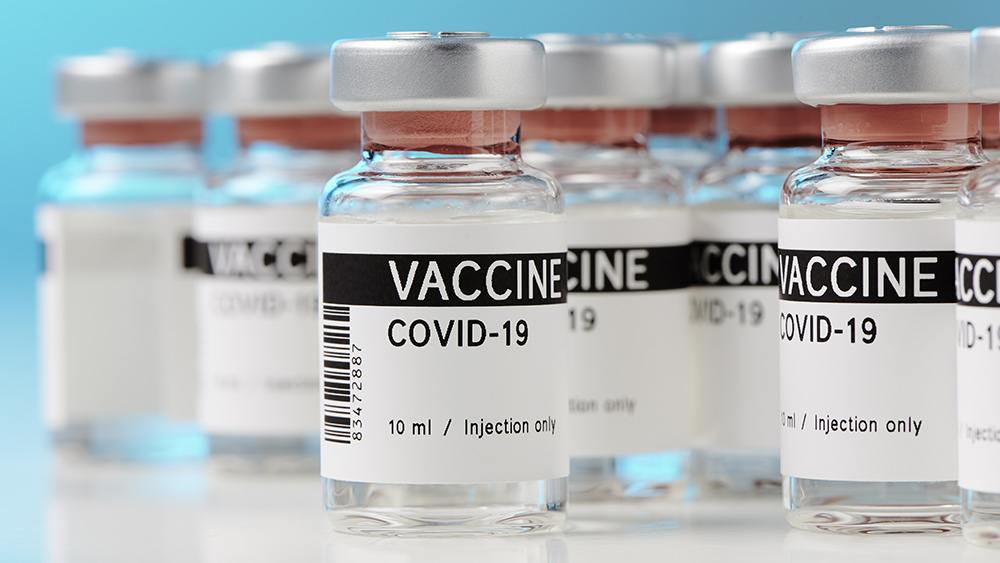You gotta start ’em young: Teens with healthy muscle mass are less likely to have metabolic syndrome
05/27/2019 / By Michelle Simmons

Teens may want to consider building their muscles not only for aesthetics but also for health reasons. Researchers from Hallym University College of Medicine in South Korea found in their study that teens with low muscle mass were more likely to develop metabolic syndrome.
Metabolic syndrome is a group of risk factors that increase a person’s chances of developing heart disease, stroke, and diabetes. A person with metabolic syndrome has at least three of the following measurements:
- Abdominal obesity or waist circumference of more than 40 inches in men, and over 35 inches in women;
- Triglyceride level of at least 150 milligrams per deciliter of blood (mg/dL);
- High-density lipoprotein (HDL) cholesterol below 40 mg/dL in men or less than 50 mg/dL in women
- Systolic blood pressure of 130 millimeters of mercury (mm Hg) or higher, or diastolic blood pressure of 85 mm Hg or greater; or
- Fasting blood sugar of 100 mg/dL or higher.
In the study, the researchers looked at the effect of having low muscle mass in teens on the risk of metabolic syndrome. They observed 1,420 participants aged 12 to 19 years, who were part of the Korea National Health and Nutrition Examination Surveys from 2009 to 2011.
The results of their study revealed that teens with low muscle mass were at a significantly higher risk for metabolic syndrome compared to those without low muscle mass. The findings of the study were published in the journal Nutrition Research.
Research suggests muscle mass plays a critical role in health
A review published in the journal Annals of Medicine reported that muscle mass is linked to overall health. The review included more than 140 studies in inpatient, outpatient, and long-term care settings over a year, starting from January 2016 to January 2017.
Based on the data of the studies, individuals with a low muscle mass had worse conditions after undergoing surgery and hospitalization. Many studies looked at the effect of muscle mass on the survival of patients undergoing surgery and found a link between higher muscle mass and a higher chance of survival. People with low muscle mass were also at a higher risk of suffering from post-operative complications. Studies also found that low muscle mass was associated with worse outcomes in cancer, cardiovascular disease, chronic obstructive pulmonary disease, kidney disease, and liver diseases.
From these findings, the review authors, who were from Canada and America, concluded that people with less muscle have more surgical and post-operative complications, longer hospital stays, reduced physical function, poorer quality of life, and lower survival rates overall. They also noted that muscle mass measurements are not widely available in most clinical settings, and the impact of low muscle mass remains under-recognized.
Building muscles for teens
Strength training is the type of exercise that helps build muscles. It also helps you burn more calories, make your bones stronger, improve your overall fitness, and boost your mental health. Although strength training typically involves lifting free weights like barbells, it is not restricted to that. You can also use bands, or even your own weight, to get resistance and build muscle. (Related: Here’s why people with metabolic syndrome should participate in high-intensity interval training.)
If you are new to strength training, it is best to start with body weight exercises, such as sit-ups, push-ups, and squats, for a few weeks and work on exercises without any additional weight. From there, you can gradually add weight as long as you can comfortably do the exercise for eight to 15 repetitions. For best results, do strength training for at least 20 to 30 minutes twice or thrice a week, taking a day off between sessions. Additionally, focus on working out the major muscle groups in your arms, legs, and core, such as abdominal muscles, back, and buttocks.
Visit Prevention.news to learn more about how to prevent metabolic syndrome.
Sources include:
Submit a correction >>
Tagged Under:
adolescents, blood pressure, BMI, body mass index, cardiovascular disease, cardiovascular health, cholesterol, diabetes, exercise, Fasting blood sugar, fightobesity, fitness, heart disease, heart health, low muscle mass, metabolic syndrome, muscle, muscle mass, obesity, prevention, research, slender, teenagers, Teens, triglycerides
This article may contain statements that reflect the opinion of the author
RECENT NEWS & ARTICLES
COPYRIGHT © 2017 RESEARCH NEWS





















